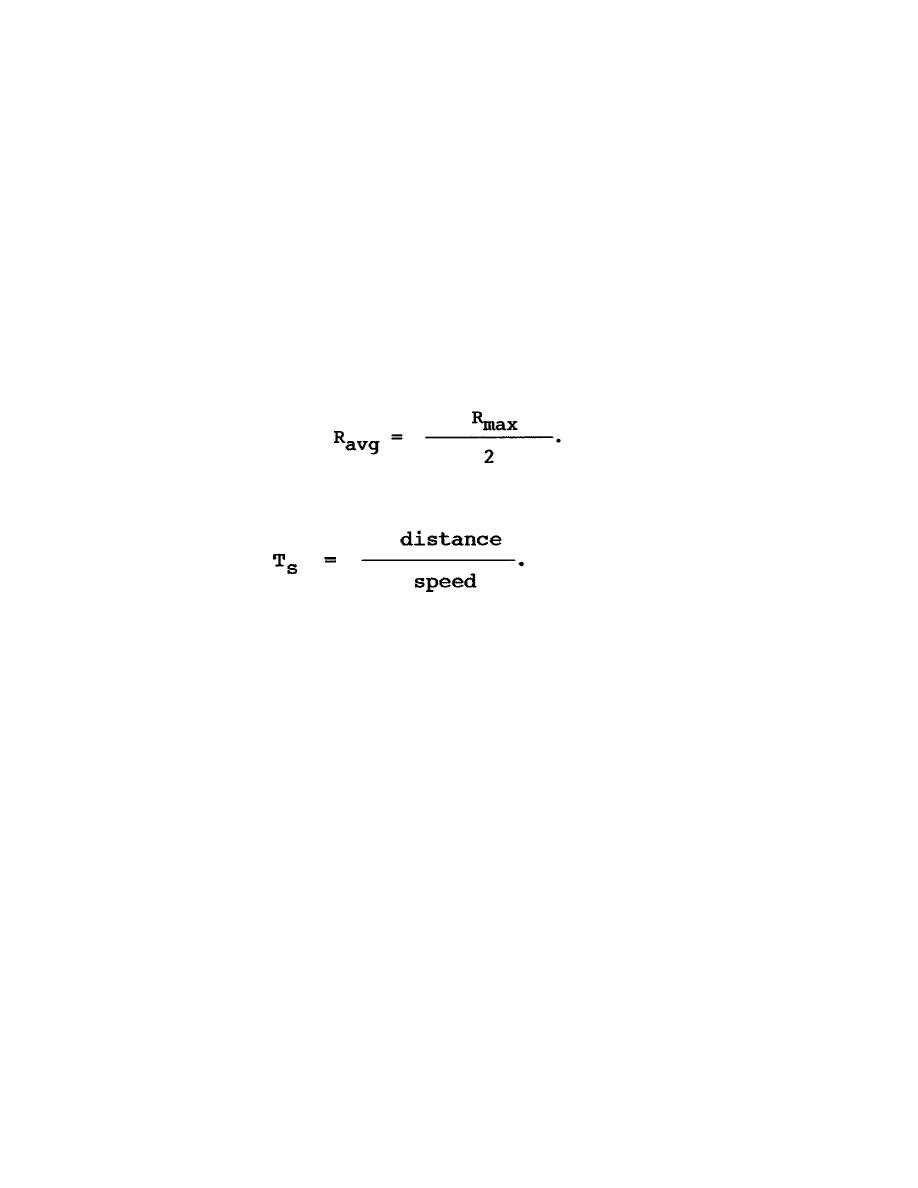
Solution: On Figure 6-17, connect 25 cGy on the D scale and 100 cGyph on the R1 scale with the
hairline. Pivot the hairline at its point of intersection with the index scale to 0.4 hour on the Ts scale
(Soil Types I and III). Read H + 3 on the Te scale at the point of intersection with the hairline.
5.
Crossing an Induced Radiation Area.
Induced radiation areas often may be avoided. However, the tactical situation may require that units
cross an area in which there is induced radiation.
In calculations of total dose, it is necessary to determine an average dose rate since the dose rates will
increase as the center of the area is approached and then will decrease, beyond the center of the area.
The average dose rate represents a mean value to which the individual is exposed during the time of
stay. A reasonable approximation of the average dose rate can be obtained by dividing by two the
maximum dose rate predicted to be encountered.
Symbolically, this is written as
Time of stay (stay time) must be calculated for crossing problems.
Use the relationship of
CM2308
6-38



 Previous Page
Previous Page
